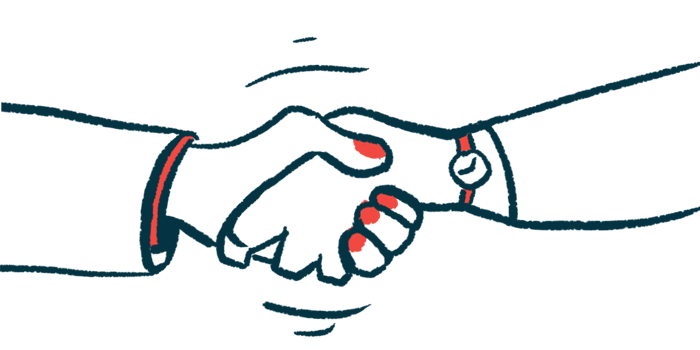Arbor, 4DMT to develop novel gene therapies for ALS, other diseases
Companies partner on up to 6 gene-editing candidates using CRISPR/Cas9

Arbor Biotechnologies and 4DMT — two U.S. companies working in next-generation genetic medicines — have established a strategic partnership to develop and commercialize novel gene therapies for neurological diseases, including amyotrophic lateral sclerosis (ALS).
The agreement includes the codevelopment of up to six product candidates for diseases affecting the central nervous system — known as the CNS and comprised of the brain and spinal cord — with high unmet medical needs.
The candidate therapies will use a gene editing system called CRISPR/Cas9, which is expected to modify specific genes involved in certain diseases. This gene editing platform will be packaged into adeno-associated viruses (AAV), which are commonly used viral vectors that can effectively deliver genetic cargo to human cells, and are easy to manipulate in a laboratory, without causing illness to people.
“Gene editing technology continues to rapidly advance and we believe the safe and efficient delivery of these potentially transformative therapies can address CNS diseases of high unmet need,” David Kirn, MD, 4DMT’s co-founder and CEO, said in a press release announcing the partnership.
All gene therapies will aim to treat central nervous system disorders
Under the terms of the agreement, the costs and profits of the product candidates’ research, development, and commercialization, if ultimately approved, will be evenly shared.
4DMT, based in California, will contribute with its proprietary platform Therapeutic Vector Evolution, which produces AAV vectors that target specific tissues, including the CNS. The partnership also will leverage the company’s AAV product design and engineering, and manufacturing, as well as its clinical and regulatory development expertise.
For its part, Arbor will share its proprietary system to discover new gene editing CRISPR/Cas9 approaches for a given condition, using genomic data and artificial intelligence technologies to screen, identify, and optimize gene editing technologies.
“CNS disorders include some of the most devastating diseases, many of which have a genetic origin,” said Devyn Smith, PhD, CEO of Arbor, based in Massachusetts.
“The technology to effectively edit the underlying genetic mutations within these diseases did not exist until an AAV-compatible genomic editing technology was developed,” Smith said.
Arbor has expertise in inserting the gene editing system into a single AAV vector, which enables the use of additional delivery mechanisms that increase its specificity and reduce side effects. In addition, the company will bring into the partnership its expertise in CNS biology and in targeting CNS diseases.
We look forward to combining our complementary technologies and capabilities to power a new generation of potential genetic medicines.
Kirn said he expects the two companies’ different areas of expertise to each aid the other.
“We look forward to combining our complementary technologies and capabilities to power a new generation of potential genetic medicines,” Kirn said.
CRISPR/Cas9 was developed by manipulating a system that bacteria normally use to defend themselves from viral infections. In the most simple terms, the system can be used to remove (cut out), edit, or insert a specific stretch of DNA into a given region of the genome.
The first product candidate arising from the collaboration will be developed for a molecular target implicated in ALS, for which there are a limited number of treatments available. The therapy’s research, development, and commercialization efforts will be led by Arbor.
Following that, 4DMT will be responsible for the research, development, and marketing efforts for the second candidate. The target and disease for which this second and the other product candidates will be developed have not been disclosed, but the partnership aims to extend to other diseases affecting the CNS other than ALS.
“Utilizing our expansive toolbox of AAV compatible genomic editors, we aim to advance the development of potential lifesaving therapies for CNS diseases,” Smith said.
“4DMT’s … AAV vectors potentially provide the best delivery vehicles for our gene editing payloads to target select regions of the brain that we believe could provide meaningful benefits to patients in both rare and large CNS patient populations,” Smith added.







